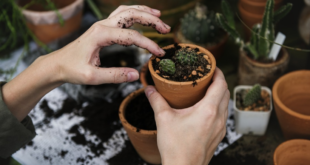There are many ways to encourage children to get involved in gardening. Guest contributor OECO Garden Rooms talk through some of the best ideas.
Gardening is the perfect way for children to learn new skills, have fun and to be creative, whatever their age. Studies have also showed that children are more likely to perform better at school, develop healthier eating habits and an interest in the environment and nature when gardening.
Growing vegetables and planting flowers
Growing vegetables and planting flowers is a great way of getting children involved in gardening. It can feed curiosity as they watch their seeds sprout, learn how plants grow and how to look after them, as well as make them more likely to try all of the different vegetables and fruits once ripe.
Tomatoes, peas, potatoes and radishes are among some of the easier vegetables to grow in the garden and are perfect for beginners. Salad leaves are also a good choice as these can be planted throughout the summer and will be ready to pick in as little as 3 weeks, and if harvested right they will continue growing so can be picked again and again.
Quick growing flowers that will keep impatient children interested include Nasturtium (a colourful flower which also acts as a natural pest control in vegetable gardens), Sunflowers (a fast growing, beautiful flower which is a favourite with bees) and Wild Strawberries (they require minimal maintenance, produce a crop quickly and are a great sweet treat for children).
Another good tip is to get your children to make their own plant labels; these can be brightly coloured and can be used to mark what seeds have been planted and when.
Give children their own area
If you have enough space, giving your child their own special area to learn and play in can be very rewarding. Make sure that the area chosen gets enough sunlight and is easily accessible, you can also decorate it by painting the fences in their favourite colour and adding their own toys and furniture to make the space unique.
You can always start off small by utilising a couple of plant pots which the children can decorate themselves, moving to a bigger area as they learn and want to do more in the garden. It is also a good idea to buy a set of child-friendly gardening tools so that they can feel a sense of independence and be able to do more in their own special garden.
Give them creative licence to do whatever they want to their garden, whether it’s growing vegetables and flowers, creating a wildlife habitat or creating an enclosure for rabbits or guinea pigs. Provide them with suitable material to create the space they want and provide help and advice when needed.
Take photos and document the progress in a diary
Documenting the gardens progress throughout the year is a great way of seeing how things change during the seasons, how plants and vegetables grow over time and a way of learning what works and what doesn’t in your garden.
Taking pictures and keeping a journal is the perfect way to keep children interested as they can document their experiences, make growth charts and write about how the food they have grown tastes. You can also set up a blog or social media pages so that they can share their experiences with friends and family.
One thing to make sure of during the whole process is to keep the children involved as much as possible, ask them lots of questions and get their feedback as well. At the end of the day you want them to feel a sense of pride when they go out into the garden, a trait that they will undoubtedly carry with them throughout their lives and be willing to teach their children too.
Oeco Garden Rooms is a family run business and have been manufacturing and installing timber framed structures for over 10 years.
 Gardeners Club The Gardeners Club is a free to join online club for everyone with an interest in gardening and gardens.
Gardeners Club The Gardeners Club is a free to join online club for everyone with an interest in gardening and gardens.






